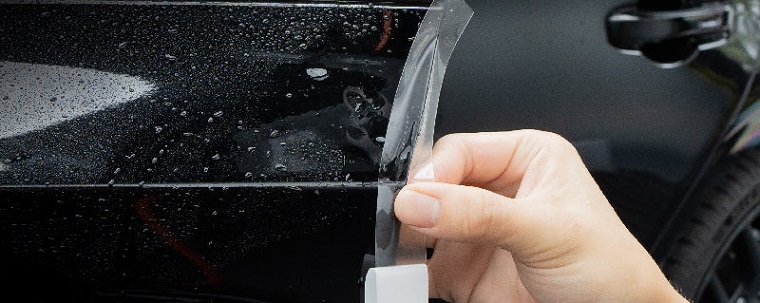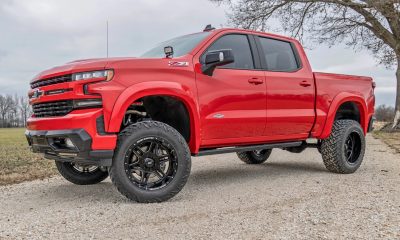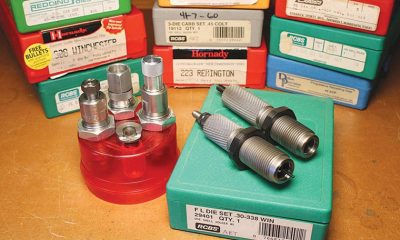Automotive
The Ultimate Guide to Protecting Your Vehicle with Paint Protection Films
No matter how old your vehicle is, a faded, oxidized paint job is guaranteed to make it look even older. Even under the best of conditions, it only takes a few years of being blasted by sand and wind, and baked by sun and UV exposure for the elements to grind their way through your vehicle’s protective clear coat. And make no mistake: once your clear coat is compromised, the rate of degradation is going to increase exponentially.
The fact is, the best way to protect your vehicle’s finish from Australia’s aggressive climate is to place an actual barrier between it and the elements – one that doesn’t mar or obscure your finish when it’s on, or leave any type of damage or residue when you’re ready to take it off. This the domain of self-healing PPFs: Paint Protection Films. They’re the modern equivalent of your vehicle’s factory clear coat, and they offer an unmistakable range of benefits that can bring the aging process to a standstill.
Durable Paint Protection Films That Extend the Life of Your Paint Job

Let’s be honest: while waxes, sealants, and polymer-type coatings are better than nothing when it comes to protecting your vehicle’s finish, only a tough, self-healing polyurethane PPF film has the strength and durability to protect it from the worst that nature and other road users have to dish out. PPFs cost more than standard protectants, but they’re also engineered to deliver more and to last for years when properly maintained. That puts them in a class all their own as far as paint protection goes; and what they can go on to save you in costly paint touch-ups and general frustration makes them an option that you can’t afford to ignore.
Clear, highly elastic thermoplastic polyurethane (TPU) is the primary component in top quality paint protection film, and is also the same material used in impact-resistant glass. Together with its 100% transparency, TPU’s natural flexibility allows it to absorb the force of impacts that could otherwise ruin your paint job, affording it a complete range of protective features that include:
- High tensile strength. The high tensile strength of TPU makes PPF the perfect barrier material for deflecting unwanted damage from chips, scratches, and nicks.
- Superior abrasion resistance. TPU’s ability to warp without scarring allows PPFs to resist the abrasive affects of everything from windblown grit and road debris, to light scuffs and scrapes.
- Hydrophobic resistance. TPU’s natural hydrophobia helps PPFs repel water, block unwanted water spots, and prevent the unsightly accumulation dirt, dust, and grime.
- Exceptional chemical resistance. PPFs offer solid resistance against a range of airborne chemicals and pollutants, as well as road-borne oils and greases that can spoil paintwork.
- Excellent Transparency. Unlike first generation PPFs that were highly porous and prone to absorbing airborne particles, modern PPFs won’t fade or discolour, are UV resistant, and won’t peel or crack even after long-term exposure.
Quite simply, where unprotected paint or a compromised clear coat would be susceptible to everything from fading and peeling, to chipping and peeling, polyurethane’s durability effectively seals the environment out, while locking your vehicle’s natural luster in. Premium grade coatings like the ones from PPF Malaysia can even be counted on to protect against the corrosive affects of bird droppings and tree sap, giving it a decisive step-up on any other type of protectant you can purchase.
Understanding How Self-Healing Films Provide Peerless Protection
If the benefits of a good PPF coating are too good to ignore, it’s important to understand how their self-healing behavior affects their performance. With a thickness between 6mil (0.15mm) and 10mil (0.25mm), the stress dispersion properties of a TPU-based PPF are engineered to allow the coating to warp without tearing, to return to its even state when heated to a temperature of 60°C, and to revert to its original protective strength after it cools.
Only PPFs boast a self-healing capacity; and it’s a quality that offers its own chemically-infused core of benefits that include:
- Reliability. Although a PPF’s lifespan is dependent on environmental conditions, its self-healing properties allow it to survive a much broader array of conditions than other protectants.
- Longevity. Unlike waxes and clear coats that can easily be scraped off, the dispersing action of PPFs allow them to protect a vehicle’s finish from scratches, grime, and even corrosion up to 30% longer.
- Applicability. With the exception of the windscreen, a PPF can be applied to any part of your vehicle that’s made of rubber, fiberglass, or metal.
With a tough, self-healing PPF, you don’t have to be worried about the scrapes and scratches that crowded car parks, over-confident bike riders, and even stones kicked up in traffic can cause. You do, however, need to be sure that you’re buying only the highest quality PPF, and that the PPF service you select to have install your coating knows precisely what they’re doing.
A Professional Installation Guarantees the Best Results

When it comes to getting the most from your PPF, installation is invariably the most critical factor. And depending on whether you only want to install a PPF on the forward half of your vehicle, or to cover it completely, everything from its size to the complexity of its shape has to be considered.
The amount of PPF material, effort, and ultimately the cost needed to cover a small car won’t be the same as what’s needed to cover a full-sized ute, which is why reaching out to a professional installer is your best guarantee of premium results. Professional installers like the ones recommended by PPF Service Malaysia are experts when it comes to perfect PPF applications, and they know the components of a perfectly install, such as:
- Properly prepping and cleaning the application area before beginning an install;
- Performing all necessary paint touch-ups before proceeding with the install; and,
- Anticipating areas like corners, curves, and louvers that could cause a problem if the film isn’t applied carefully.
Ideally, not only will a professional installer have the equipment and know how to perform a proper PPF car or ute application, they can also advise you on how best to take care of your coating. When it comes to waxing, maintaining, or even removing your PPF, they have the expert knowledge you need to continue protecting your coating and your finish.
The Final Word
At the end of the day, it doesn’t matter if your vehicle is still dressed in its factory stock paint job, or you’ve splurged in a custom pearl white paint job that’s deep enough to get lost in, you want to protect it. Protecting your paint also means protecting the underlying metal, and ultimately your vehicle’s resale value – both being benefits that are well worth preserving.
A self-healing, polyurethane-based PPF film has all the properties you need to keep your vehicle’s paint looking as good as the day it went on. It’s a investment in your vehicle’s value that you won’t regret making.
Writing for the blog since 2012, Chris simply loves the idea of providing people with useful info on business, technology, vehicles, industry, sports and travel – all subjects of his interest. Even though he sounds like quite the butch, he’d watch a chick flick occasionally if it makes the wife happy, and he’s a fan of skincare routines though you’d never have him admit that unless you compliment his impeccable skin complexion.






















